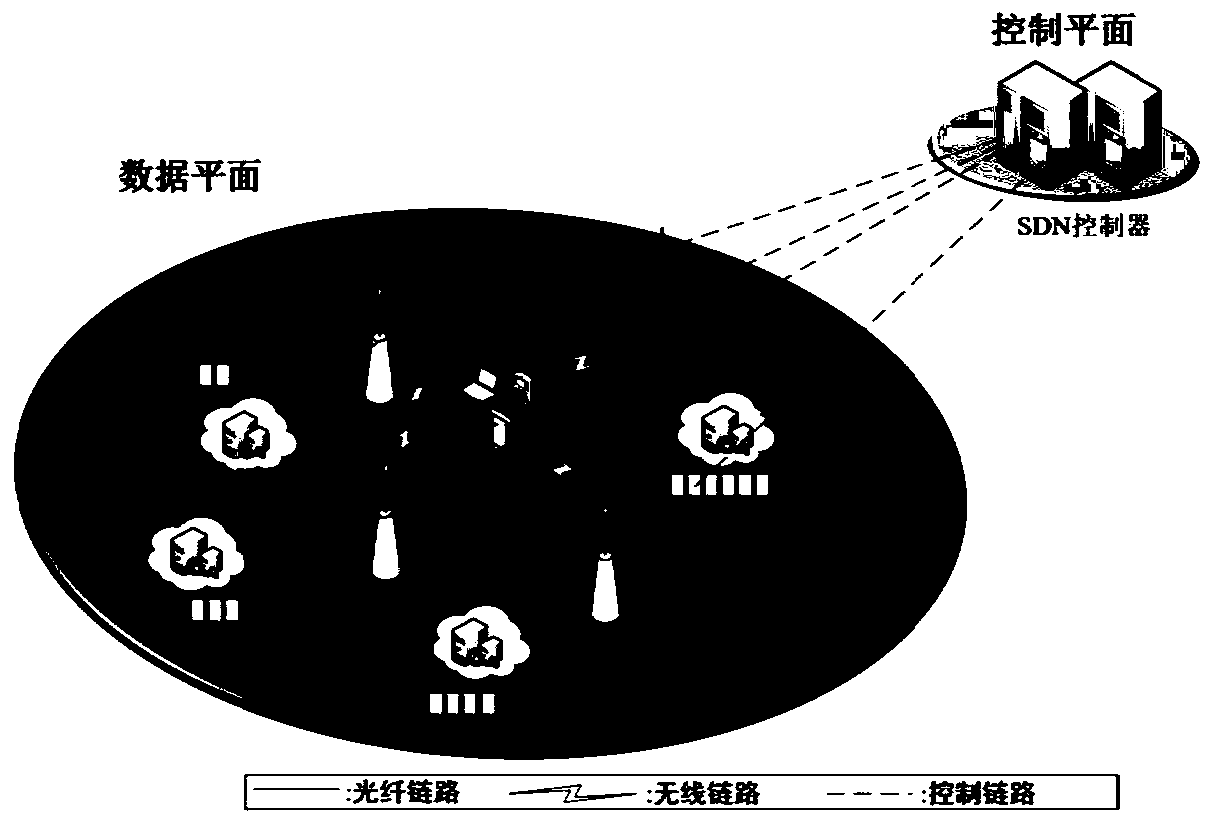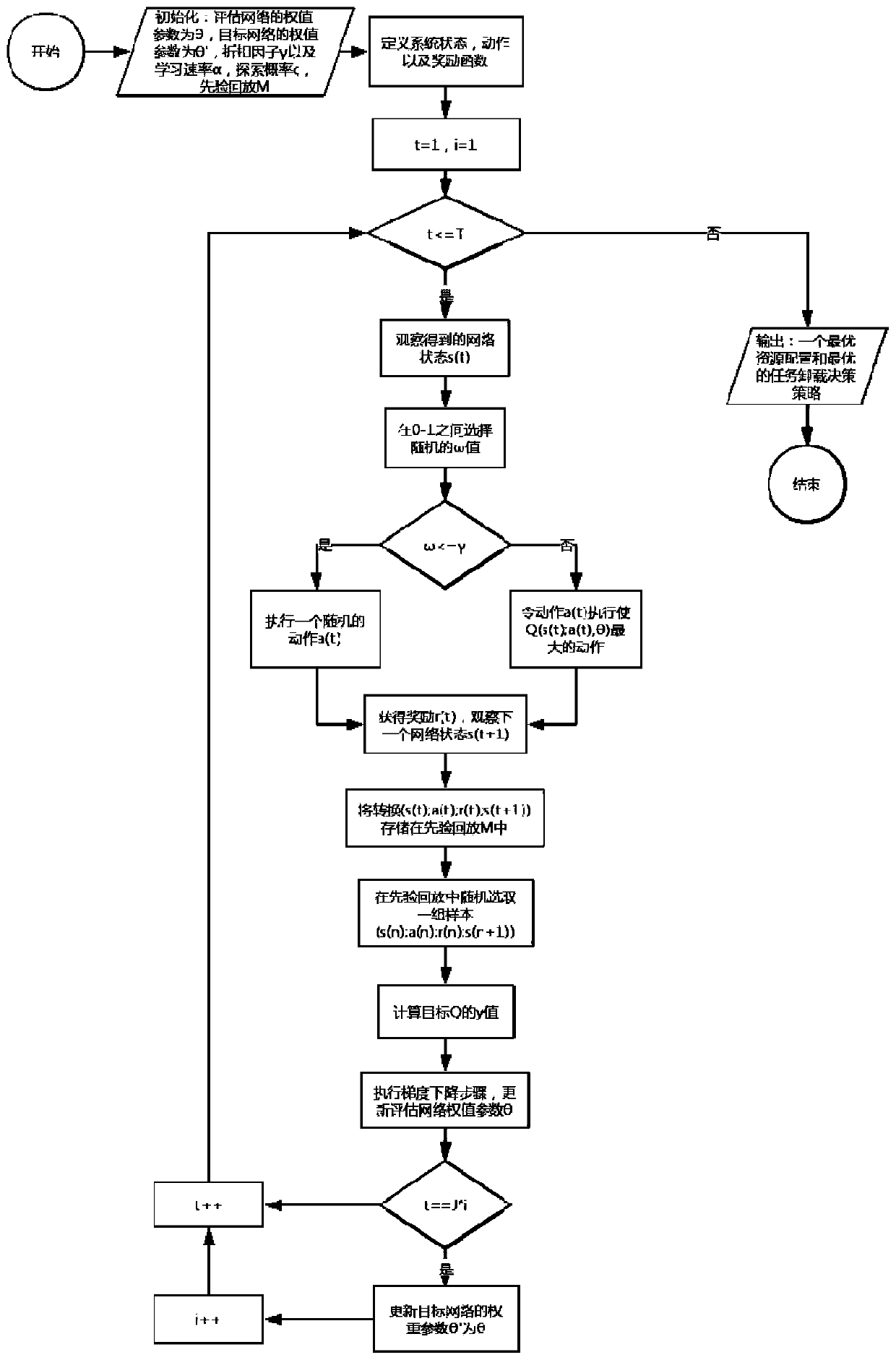Computing resource allocation and task unloading method for edge computing of super-dense network
A computing resource and edge computing technology, applied in electrical components, wireless communication, etc., can solve problems such as difficult unloading performance
- Summary
- Abstract
- Description
- Claims
- Application Information
AI Technical Summary
Problems solved by technology
Method used
Image
Examples
Embodiment Construction
[0066] The present invention is further described below in conjunction with accompanying drawing:
[0067] Step 1): as attached figure 1 As shown, the system model is established as an SDN-based ultra-dense network edge computing network, which is a scenario of multiple users, multi-task types, and multiple MEC servers. The user's local and edge servers can only process at most one computing task at the same time, and the MEC base station supports multiple users. access
[0068] Obtain network parameters: the number of mobile devices C in the scene, use the set Indicates; the number of macro base stations is 1, the number of small base stations is B, and the set Indicates; the number of wireless channels connected to the macro base station is W m , the number of wireless channels connected to the small base station s is W s ; There are a total of E types of computing tasks, represented by ε={1,2,...E}, and the arrival and processing of tasks adopts the M / M / 1 queuing mode...
PUM
 Login to View More
Login to View More Abstract
Description
Claims
Application Information
 Login to View More
Login to View More - R&D
- Intellectual Property
- Life Sciences
- Materials
- Tech Scout
- Unparalleled Data Quality
- Higher Quality Content
- 60% Fewer Hallucinations
Browse by: Latest US Patents, China's latest patents, Technical Efficacy Thesaurus, Application Domain, Technology Topic, Popular Technical Reports.
© 2025 PatSnap. All rights reserved.Legal|Privacy policy|Modern Slavery Act Transparency Statement|Sitemap|About US| Contact US: help@patsnap.com



